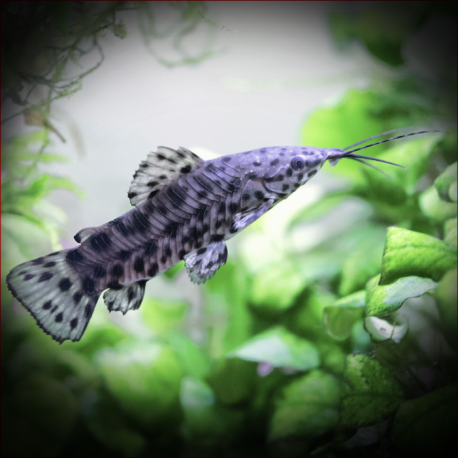More info
Datasheet
| Minimum Tank Size | 140 litres / 36.98 US gallons |
| Maximum Size | 15.0cm / 5.91inches |
| Temperature | 18°C / 64.40°F - 28°C / 82.40°F |
| Hardness | 0-20ºdH |
| pH | 6.0-8.0 |
General Description
The Spotted Hoplo, scientifically known as Megalechis Thoracata, is a popular and hardy fish native to northern South America. With the ability to breathe atmospheric air by gulping down mouthfuls of air, these fish can adapt to various conditions in captivity. They are still commonly referred to as hoplosternum thoracatum and are often consumed as a food fish in certain regions of South America.
Aquarium Setup
For keeping the Spotted Hoplo, a tank size of at least 140 litres is recommended. Setting up the aquarium with rocks, plants, and bogwood provides essential cover for these fish. A sandy or fine gravel substrate is preferable as they enjoy sifting through it in search of food. Water flow should be slow to still, although they can adapt to stronger currents. Lighting should be adjusted based on the plant life in the tank (see table for specific water conditions).
Behaviour
Spotted Hoplos are peaceful community fish that can coexist with smaller species like tetras and barbs. They display an adaptable nature, allowing them to thrive in diverse setups, even alongside larger and more aggressive species like Central American cichlids.
Feeding and Diet
These fish readily accept most commercially available foods, but incorporating live or frozen options is vital for a balanced diet. Including brine shrimp and fry foods is essential for their nutrition and overall well-being.
Reproduction & Dimorphism
During reproduction, the male Spotted Hoplo constructs a bubblenest, which is fortified with floating plants. To avoid disrupting the nest, gentle filtration in the breeding tank is recommended. After spawning, the male guards the nest and may exhibit aggression towards the female. The fry hatch in approximately 48 hours and become free-swimming after 3-4 days. To support their growth, feed them brine shrimp initially, gradually transitioning to fry foods and crushed flakes or pellets. Dimorphism: Males can be distinguished by their thicker and orangey/yellow leading ray on the pectoral fins, as well as a more colorful belly during breeding.
Habitat and Distribution
In their natural habitat, Spotted Hoplos are primarily found in still waters. They have a widespread distribution across northern South America, where they adapt to various ecological conditions, showcasing their hardy nature.

